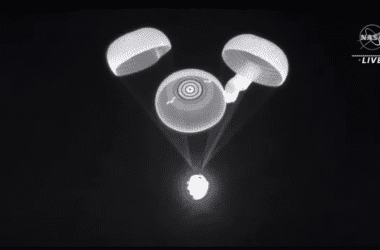NASA’s Scientific Balloon Program recently gave the agency a plan on how to organize and finance future balloon astronomy projects. Even though balloons have been used for physics tests, astronomical investigations, and Earth-observing studies for almost a century, the public has a limited understanding of these activities. Similar benefits to those of space telescopes can be realized by balloon astronomy, albeit at a far lower price tag.
In 1912, Austrian physicist Victor Hess hoisted three electroscopes to a height of more than 17,000 feet in the very first modern balloon-based scientific test.
The higher Hess went in height, the more ionizing radiation he found. Hess had set out to demonstrate that background radiation is emitted by radioactive materials in the ground. The experiment that garnered Hess the Nobel Prize and led to the discovery of the high-speed particles now known as cosmic rays also marked the beginning of the science of high-energy astrophysics.
The scientific goals of today’s balloon expeditions span several disciplines. Particle physics experiments can benefit greatly from cosmic-ray measurements. Observing the collisions of cosmic rays with air molecules in the upper atmosphere can provide scientists with vital information about the nature of these particles, whose energy are typically far higher than those achieved in particle accelerators such as the Large Hadron Collider.
Traditional astronomy observations are also frequently carried out using balloons. Many times, small telescopes are raised above the atmosphere in order to see exoplanets. They can use the transit approach to directly study protoplanetary dust bands around stars and find new exoplanets.
Infrared (IR) telescopes are able to see through the water vapor in the atmosphere because of the high altitudes to which balloons can be launched. Because water vapor is so good at soaking up infrared light, these telescopes can observe extremely dim stars with a level of detail that would be unachievable from the ground. In a similar vein, terahertz (THz) band radio telescopes, which are likewise inhibited by atmospheric water vapor, can be positioned high enough to observe the interstellar medium.
What are the advantages?
Many of the advantages of observatories in space can be achieved with relatively few downsides by using balloons to put scientific equipment as well as observatories at a high enough height.
Balloons have a clear economic advantage over satellites, which is especially important given the staggering price tag of the James Webb Space Telescope (JWST) and the fact that even with the advent of reusable rockets and cutting-edge commercial launch providers, satellites remain out of reach for many smaller research programs and institutions. At a tenth of the cost of a rocket launch, balloons can lift massive cargoes to the edge of space and keep them there for days on end.
Due to the low cost of these missions, a greater degree of danger can be taken. Therefore, the experiment can be more daring, and younger or student researchers can take part in the construction of the instruments; it’s much easier to accept a failed experiment if it didn’t cost too much!
The success percentage of balloon missions is likewise relatively high. The two most common outcomes for satellites are re-entry to Earth’s atmosphere or abandonment in space. The balloon missions, by contrast hand, typically have GPS receivers and constantly send data.
As a result of the aforementioned benefits, balloons are frequently utilized as a proving ground for innovative observing systems and sensors. Instruments aboard orbiting observatories and interplanetary spacecraft had their origins in early testing with balloons.
Scintillating-optical-fiber hodoscopes are extensively used instruments for detecting cosmic rays in space. For the past 23 years, the ACE spacecraft’s Cosmic Ray Isotope Spectrometer (CRIS) has been collecting data without a hitch thanks to the employment of one.
In addition, one can be found on the ISS as a component of the CALorimetric Electron Telescope (CALET). Instruments like these had years of research and testing with balloon-borne cosmic-ray studies before being deployed into orbit.
Instrumentation developed for use at the high altitudes at which balloons operate is also used by the Payload for Antimatter Matter Exploration and Light-nuclei Astrophysics (PAMELA) as well as the second Alpha Magnetic Spectrometer (AMS02) on the International Space Station.
There are three primary considerations when designing balloons for use in balloon astronomy. They need to be able to float to great heights, carry significant loads, and fly for extended periods of time without needing to land.
When released into the air, helium balloons have just a half load of gas. Atmospheric pressure decreases as they ascend, causing the helium inside the balloon to expand, ensuring that it remains unburstably underinflated until it reaches its operational altitude. Nonetheless, this is not a secure scenario. The gas inside the balloon expands and contracts in response to changes in the surrounding temperature and pressure, causing the balloon to either rise or fall in height, or even burst. NASA adopts a dual-design strategy to handle this situation.
The altitude of a zero-pressure balloon (ZPB) can be adjusted as needed through the addition of ballast or the release of helium. If a ZPS balloon is in danger of going too high, it can either release some of the gas inside to slow its ascent or drop ballast to slow its descent. Though this is a highly efficient method for doing so, it also severely limits the duration of the mission, as once the gas or ballast is depleted, the craft will be unable to sustain height and will have to begin a descent.
The gas volume within a super pressure balloon (SPB) remains constant regardless of the balloon’s size because SPBs are constructed from far more robust materials that prevent stretching. Therefore, the gas inside the balloon must always have a higher pressure than the air outside. SPBs can fly trips for very long periods because of their ability to stay at a constant altitude throughout the day and night without carrying any consumables.
ZPBs have a maximum flying duration of eight weeks in Antarctica’s summer, but most can only stay airborne for a few days at a time. Up to around 4 tons can be lifted into the low stratosphere, while only about a ton may be lifted into the upper stratosphere. SPBs, on the other hand, are capable of flights lasting up to a hundred days, however they cannot match the altitude of ZPBs or carry loads of the same weight.








